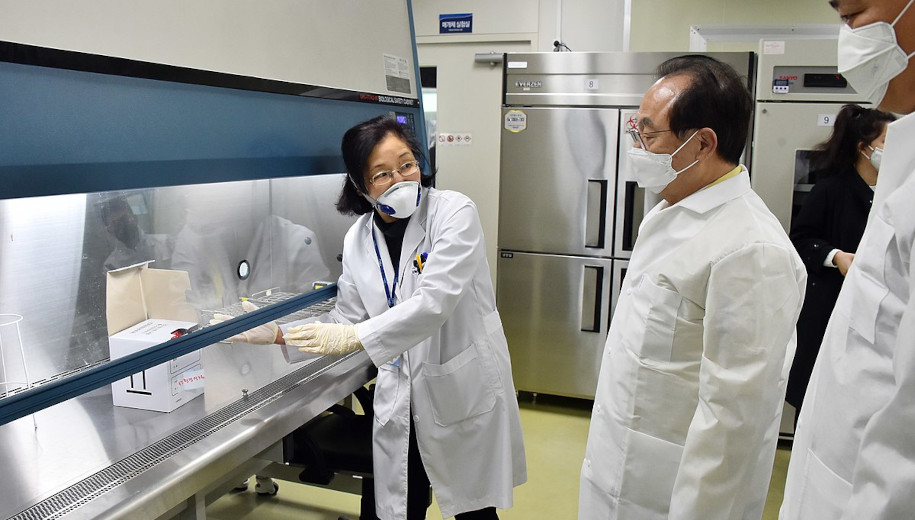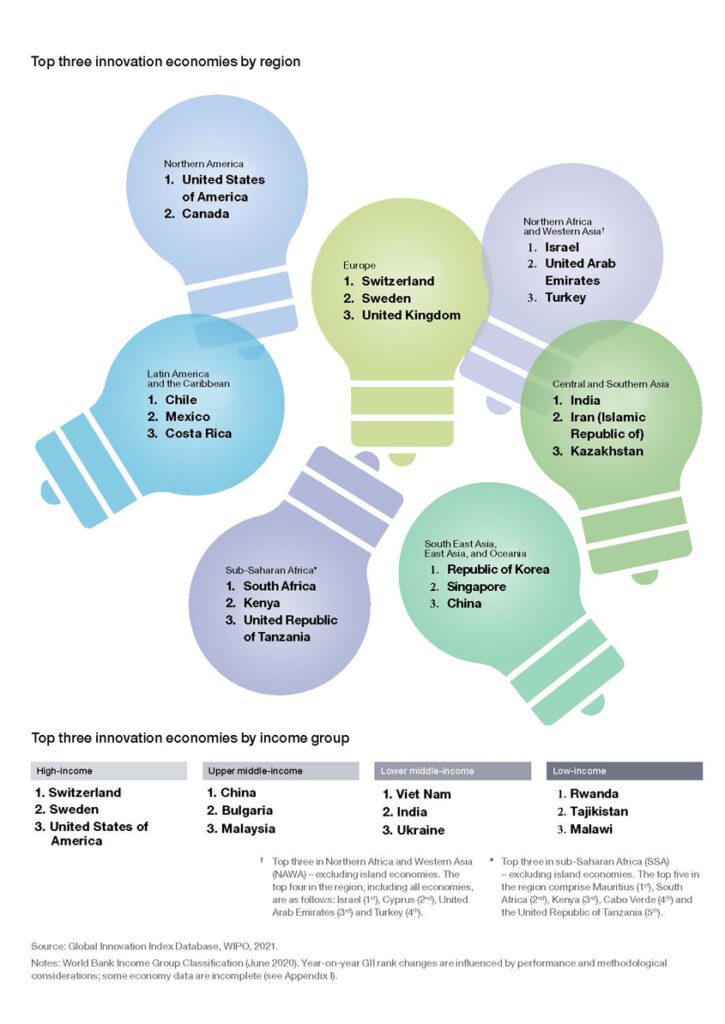26/10/21
‘Innovation leads economies out of crises’

By: Jose Galang
Send to a friend
The details you provide on this page will not be used to send unsolicited email, and will not be sold to a 3rd party. See privacy policy.
Innovation is leading countries across regions to overcome the COVID-19 pandemic and other crises.
To underline the importance of creative ideas towards economic expansion, governments and enterprises across the globe sustained activities in innovation last year despite the crippling effects of the COVID-19 pandemic.
The newly released Global Innovation Index 2021, which ranks 132 nations’ and territories’ innovative capacity and output, indicates a strong focus on both surviving the pandemic and propping up economies for a rebound from temporary setbacks.
Video credit: World Intellectual Property Organization.
Growth was sustained in scientific output, expenditures in research and development, intellectual property filings and venture capital deals continued to grow in 2021, continuing the momentum set prior to the public health crisis.
The GII rankings provide governments a system of assessing their performance in these key innovation standards that guide their economic policymaking. It is no surprise that those that rank high in the GII are also the leaders in economic development.
Among the 20 Asia Pacific countries that made it to the GII 2021, there were more ranking decliners than advancers. But that should not fool you. A closer look into the individual performance of these economies shows that despite the lower ranking, most of them still came up with more innovation output during the period.
Interestingly, 12 Asia Pacific nations and territories landed in the GII’s upper half, with eight advancing by a few notches from the previous year’s rankings.
The region’s best performer is South Korea, which ranked No. 5 in the GII 2021, a big leap from 10 in 2020, and 11 in 2019. Over this period, the GII noted, Korea has effectively translated innovation investments — among them market sophistication, institutions, infrastructure, knowledge and technology — into innovation outputs.

Top three innovation economies by region. Image credit: World Intellectual Property Organization.
South Korea’s achievement shows that a crisis can give rise to innovation opportunities. Instead of cowing to the deadly threat of COVID-19, the country injected more investment in its research and development investment in biosciences in support of vaccines and medicines development, and information technology to boost digital transformation.
South Korea’s climb to No. 5 also in the process overtook Singapore which has occupied No. 8 for the previous three years. Singapore, which has been the sole South-East Asian economy in the GII for the past decade, last year maintained its region-leading performance in innovation inputs (institutions, human capital and research, and infrastructure) but it fared less admirably in innovation outputs (creative outputs and knowledge and technology outputs).
While mostly high-income economies dominate the list, certain middle-income economies, including China, India, Vietnam and the Philippines, are “now catching up and changing the innovation landscape”, the report said.
“While mostly high-income economies dominate the list, certain middle-income economies, including China, India, Vietnam and the Philippines, are ‘now catching up and changing the innovation landscape’”
Jose Galang
The innovation study has encouraging words for South-East Asia as a whole. Thailand, Vietnam, the Philippines and Indonesia have moved up between 5 and 40 spots in the GII over the past decade. Thailand and Vietnam rank in the 30 worldwide for the sophistication of their markets, and the Philippines is applauded in knowledge and technology outputs, the GII notes.
These countries are now regarded as leaders in other key innovation indicators too. Thailand leads in research and development financed by business and Vietnam and the Philippines are regarded as world leaders in high-tech exports.
But on the ground, there are challenges that scientists and other creative thinkers need to overcome in building on these positive reviews. For instance, the Philippines, which slipped by a notch in the 2021 ranking, can stimulate more innovative results by improving its governance and policy environment to attract more investments in scientific activity, healthcare and wellness services, and development of new technologies.
Innovation leaders
Here’s a picture of the composition of the GII leaders: Switzerland, Sweden, the US and UK continue to lead the innovation derby and have all ranked in the top five over the past three years. South Korea joined the top five for the first time in 2021, while four other Asian economies are now in the top 15: Singapore (No. 8), China (12), Japan (13) and Hong Kong (14).
China, the GII 2021 report says, is still the only middle-income economy in the top 30. Occupying places in the top 50, meanwhile, are Bulgaria (35), Malaysia (36), Turkey (41), Thailand (43), Vietnam (44), Russia (45), India (46), Ukraine (49), and Montenegro (50).
The report says that Turkey, Vietnam, India and the Philippines (51st), are “systematically catching up. These larger economies have the potential to change the global innovation landscape for good”.
In the case of India, which is already an innovation leader in a few sectors and activities, it is now seen to be effectively translating innovation investments into innovation outputs. India is able to translate “costly innovation investments into more and higher-quality outputs.” From 52 in 2019, India’s ranking in the GII has risen to 46 in the latest edition.
Along with these recent achievements in innovation, the GII report also points out a number of developments that could impact future growth. For instance, only a few economies have consistently delivered peak innovation performance. Gains, as a result, could potentially be lumping in only a few economies, although there are now notable achievements coming from some middle-income economies.
The geography of global innovations, the report says, is changing unevenly. North America and Europe continue to maintain a far lead ahead of other regions. A welcome development, however, is that the innovation performance of South-East Asia, East Asia, and Oceania has been “the most dynamic in the past decade and is the only region closing the gap”.
For these regions, the GII is expected to continue to provide a significant reference point, allowing countries to assess their innovation capabilities, their readiness not only to fight crises, but also to seek economic recovery and to create business models that will survive and thrive in the new post-pandemic world.
Jose Galang is a veteran business and economics journalist who has written for the Far Eastern Economic Review and Financial Times of London, and served as editor-in-chief of a number of Philippine newspapers. He is a former business and finance journalism professor.
This piece was produced by SciDev.Net’s Asia & Pacific desk.















